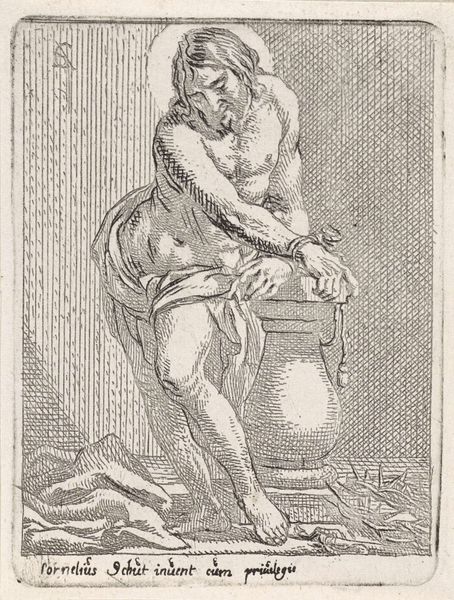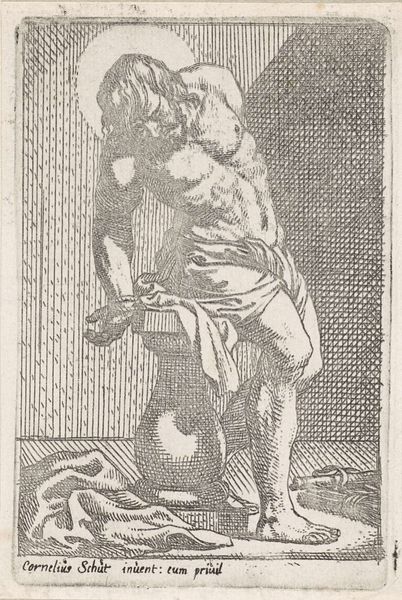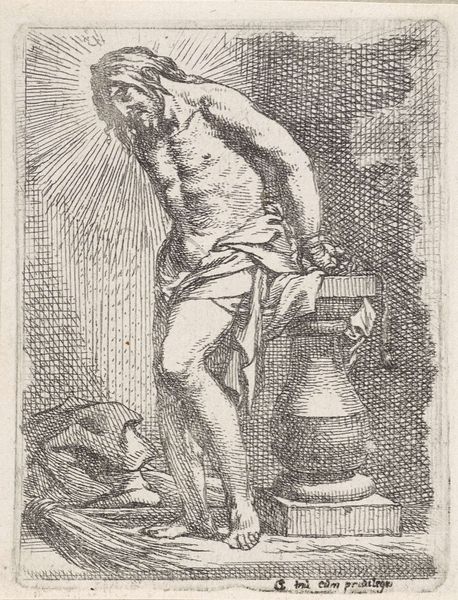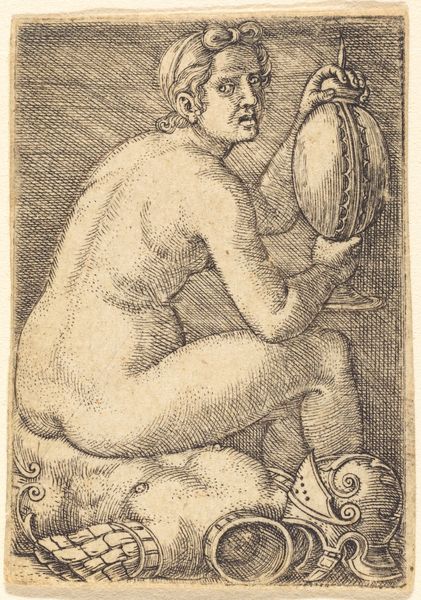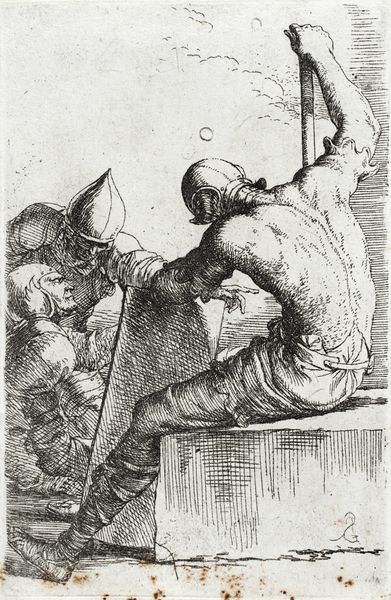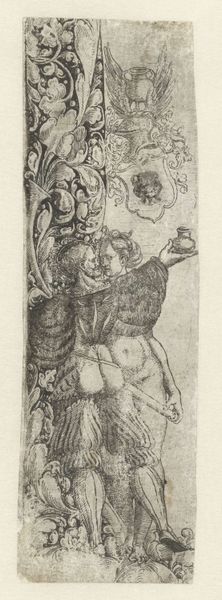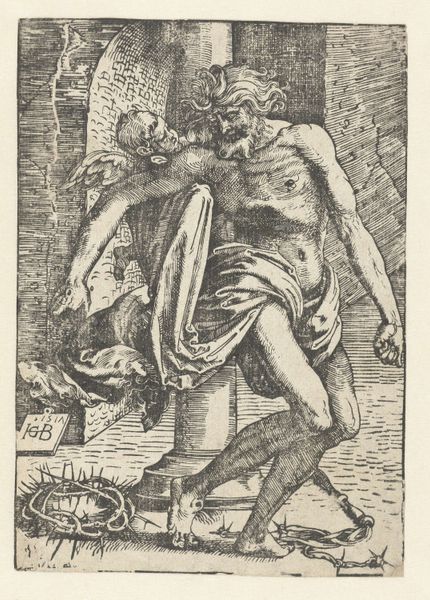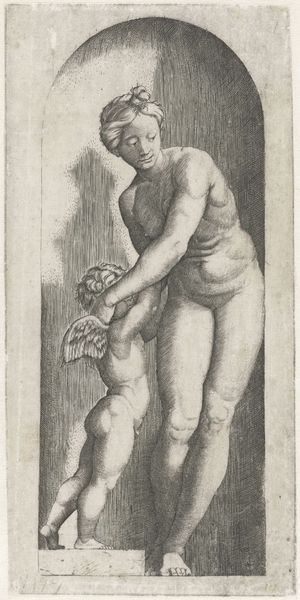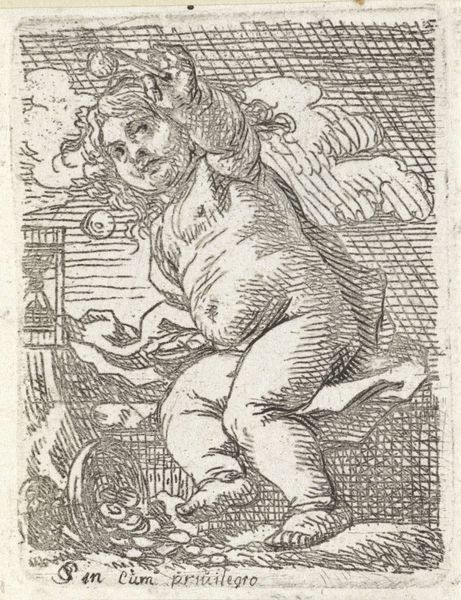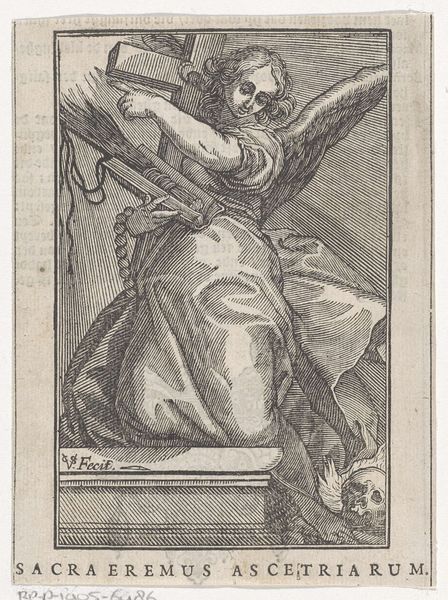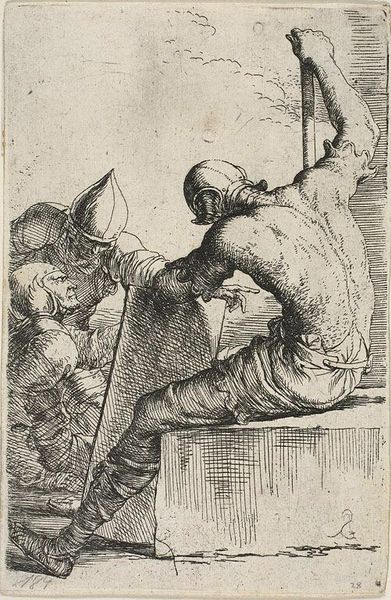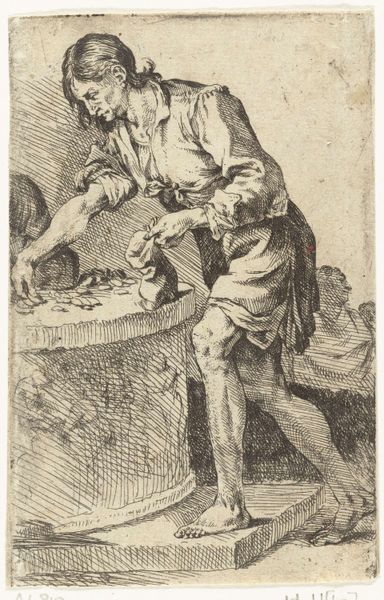
print, etching
#
portrait
#
baroque
#
pen drawing
# print
#
etching
#
figuration
#
history-painting
Dimensions: height 99 mm, width 57 mm
Copyright: Rijks Museum: Open Domain
Editor: This is "Christus aan de geselpaal" by Cornelis Schut, made sometime between 1618 and 1655. It's an etching, so a print, and the figure of Christ is very striking in his moment of suffering. What can you tell me about this work? Curator: Looking at Schut's "Christus aan de geselpaal" as a materialist, I see more than just a depiction of religious suffering. The very act of creating this etching—the labor, the skill in manipulating the copper plate, the process of inking and printing—all speak to the socio-economic context of art production at the time. Consider how prints democratized images. Who was accessing this image and what meaning was being made through the act of reproduction? Editor: That's a different way of thinking about it. So instead of just seeing it as a devotional image, you are considering the impact of making a print like this available to a broader audience? Curator: Precisely! We must look beyond the surface to examine the means of production. Etchings allowed for wider circulation of images, potentially challenging the Church’s control over religious narratives, which were usually the realm of painting within the upper class. What social function did works like these come to play? Editor: So the material – the print – affected the cultural role it played, distributing an image more easily. Curator: Indeed. Consider also the materiality of the etching itself. The lines, the use of light and shadow… it’s not just about depicting Christ, it’s about the artistic labor invested, the choices made in translating the subject into a reproducible form. The value and prestige would shift from uniquely painted versions of similar themes. Editor: I see your point. I never considered how the choice of printmaking itself shaped the artwork's purpose and impact. It really challenges the idea of "high art" when you look at its distribution in a way previously unimagined. Curator: Exactly! By thinking through materials and process, we understand art not as isolated masterpieces, but as products of a specific time and place.
Comments
No comments
Be the first to comment and join the conversation on the ultimate creative platform.
